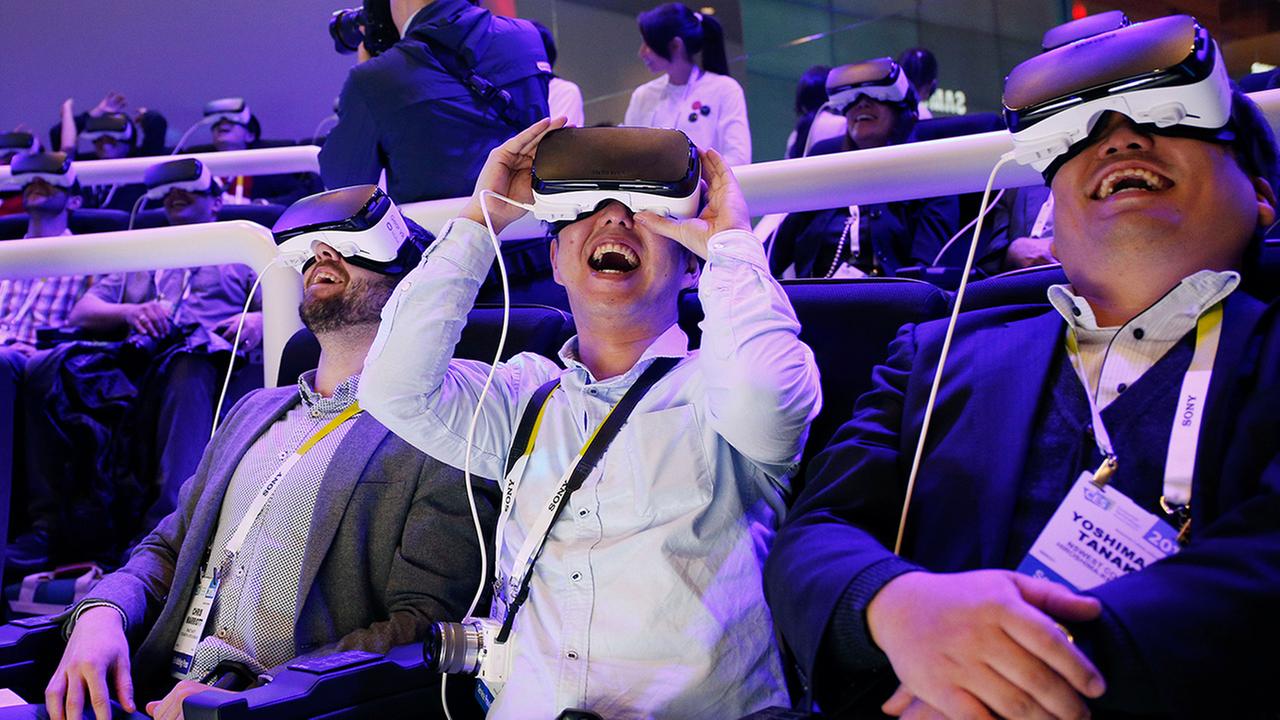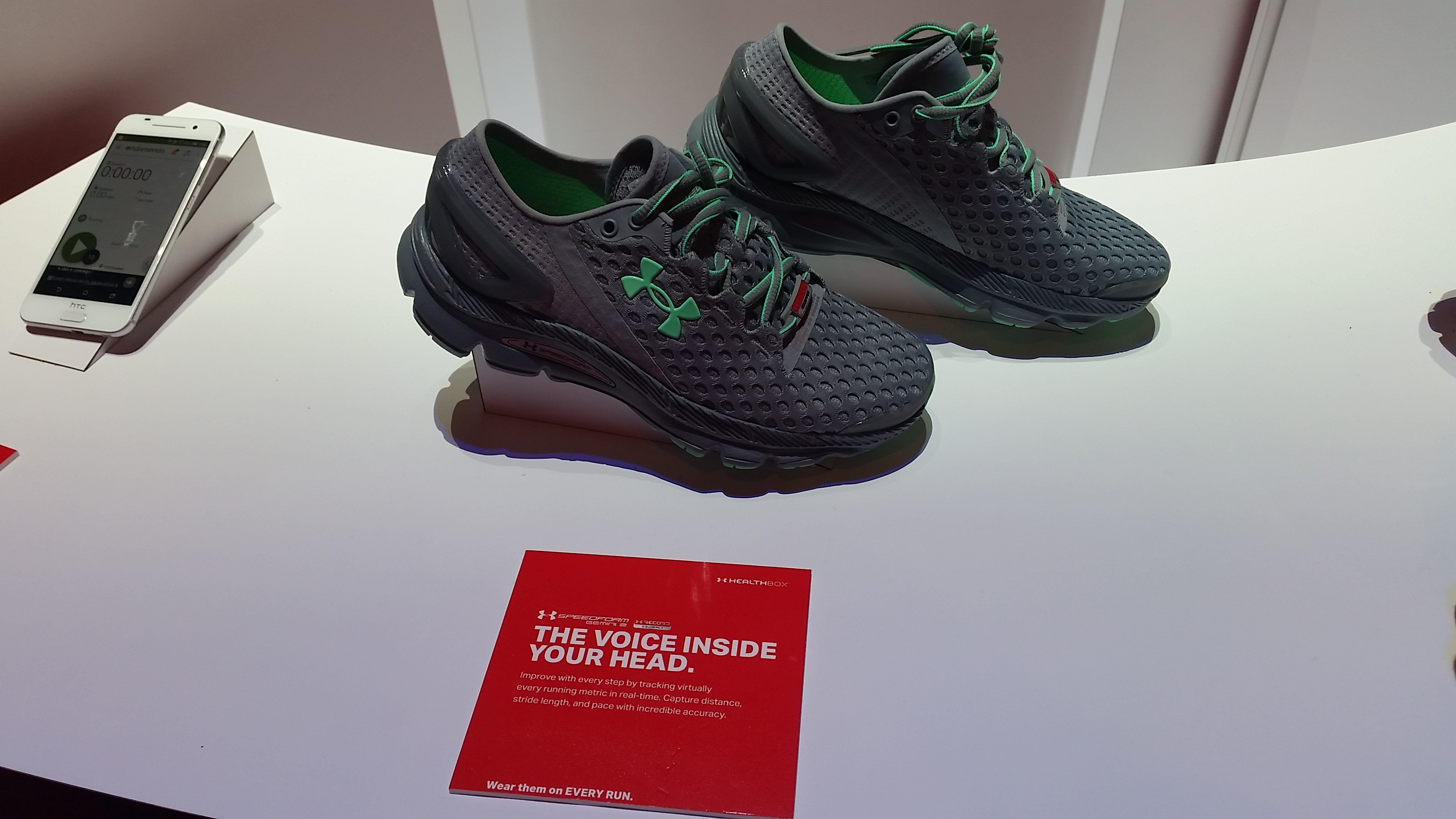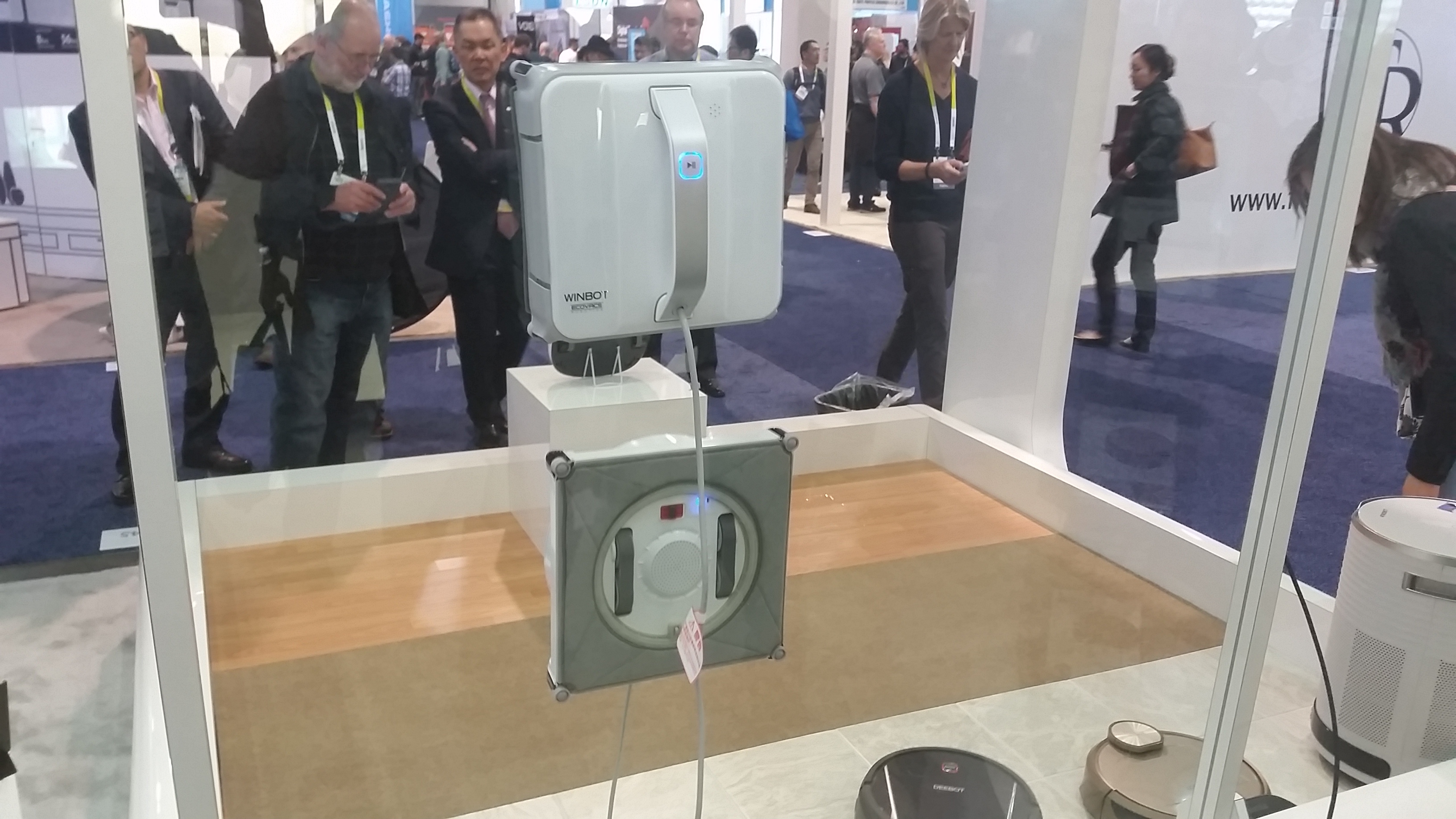1. The Parrot Disco
The four-rotor quadcopter setup has become so prolific in drone design, that most can't imagine anything different. The Parrot Disco, for example, is the first fixed-wing drone on the market that's driven by a single 8-inch propeller near the rear. Because of this design choice, the Parrot Disco flies completely unlike any quadcopter to date, in that it trades the ability to hover in place for a 50mph flight speed courtesy of minimal wind resistance.

But that's still scratching the surface of what the Disco can do. What makes it so unique is the ability to autonomously correct its path and take off after tossing it vertically in air. Couple this with a 2700mAh battery, and you've got 45 minutes of flight time to play around with its nose-mounted 1080p camera. Should you need to run to rest room, simply activate the “loiter mode,” and Disco will orbit within proximity until you've returned.
2. Samsung's VR roller coaster
Seeing so many headsets strapped to people shouting in excitement atop moveable chairs, synced to a VR simulation that you, as an onlooker, are not a part of, is truly an odd sight to behold. But once you plant yourself in the seat and strap on the headset, an understanding finally begins to emerge.
The Samsung Gear VR is not a bad investment for $100, assuming you already own the required Samsung Galaxy S6 or Note5 to power. It's an alternative to spending hundreds of dollars on an Oculus Rift or HTC Vive plus the upgraded PC needed to run them. Of course, the amount of content available on the Samsung Gear VR is limited, and the device is far weaker than the latter, but the demos still put on a hell of an experience thanks to the device's 96 degree field of view and 360 degree viewing angle.
To demonstrate this, Samsung set up a virtual roller-coaster ride, complete with virtual passengers (though real ones are sitting right next to you) and seats whose movement is perfectly timed to the video's twist and turns, creating a believable illusion.
 Image source: abc7
Image source: abc7
3. Royole -X
Jumping on the “interactive headset” bandwagon is no crime in of itself if your product offers something unique like the HTC Vive's body tracking and chaperone mode, or the Samsung Gear VR's extremely low cost. But if your product is merely a high pixel-density screen that straps to your head, as in the case of the Royole-X, then I'm not too impressed. This goes double if the image is surrounded by black boarders and creates the illusion that one is peering down from the end of a tube. I'd rather just use a monitor. At least with VR, you're sacrificing dignity for completely unique experience.

4. Samsung's reflective mirror and transparent OLED displays
Samsung's reflective OLED displays have finally reached the west after being unveiled this past June at the Retail Asia Expo 2015. The mirror display offers color gamut of over 100 percent of NTSC, a contrast ratio of over 100,000:1, and a response rate of 1 ms. In essence, it resembles a one-way-visibility window, if that window were overlaid with color graphics. Quite interesting, and unlike anything I've ever seen before.

Another fascinating display is the transparent panel that seemingly manifests vibrant colors out of nowhere on top of a transparent window. This displayed also features 100 percent color gamut of NTSC, along with transmittance levels of 45 percent, and a transparency level of 40 percent, although I'd argue that the transparency is far greater.

5. Under Armour's smart sneakers
Somewhere, some design engineer barked the order “make it smart” and the Under Armour Gemini 2 smart sneakers were born. That's because marketing people know that a low-cost Bluetooth-enabled accelerometer can go a long way in raising the product's cost with minimal investment. Gemini 2's sensor is buried deep within the sneaker's sole and cannot be removed, meaning you'll need to fork over another $150 to replace each worn out pair, regardless of whether or not the sensor's battery still functions.

It reportedly features the most accurate step tracker to date, but Under Armour could not divulge the manufacturer when I asked.
6. Dassault Systremes's 3Dexperience
Virtual reality doesn't have be a tool reserved strictly for media consumption. French product development company Dassault Systems featured an exhibit that used VR as a means of empowering users to sketch concept art in three-dimensional virtual space. By combining the HTC Vive's VR headset with motion tracking and body scanning, participants could draw floating shapes in thin air.
7. Smart Safe
Internet. Connected. Safe. What could possibly go wrong in the IoT Wild West? Developed by HISS, the “world's first smart safe” offers connectivity via Ethernet or cellular communication, as well automatic accounting on any extracted cash. Perhaps this is necessary in today's Tech-savy world.

8. Segway's robot butler
When you're down on your luck and tired of walking the ol'fashioned way, why not jump on a Segway and be done with it. Or better yet, why not incorporate robotics into the mix so that'll look like a true libertine as you cruise down street in search of prey. Segway unveiled a “Hoverboard Butler,” or rideable-butler robot during its keynote address on Tuesday, January 5, which it build in partnership with Xiaomi and Intel. The machines uses the Intel's RealSense technology suite, a machine vision system consisting of a 1080p camera, an infrared camera, and an infrared laser projector that senses depth of field and tracks human motion. Capable, no doubt, but a bit awkward for the real world.

Image source: Josh Valcarcel/WIRED
9. Ehang 187
Developed by Ehang Inc., 187 is an electric-powered single-person aircraft that's essentially an up-scaled quadcopter suited for a single human passenger. The device can supposedly fly for 23 minutes at elevations ranging from 1,000 to 11,000 feet, and will retail for somewhere between $200,000 and $300,000 — unless the whole thing's an elaborate publicity stunt.

10. Winbot 9
“Like the Roomba, but for windows,” is the best way to describe Winbot 9, Ecovacs' latest incarnation of the line of window-cleaning robots. Winbot identifies the size of your window and automatically programs itself a custom cleaning path, alerting you when it's finished. It maintains suction using a high power motor that draws in air. Overall, a pretty nifty solution, except for the fact Winbot 9 is corded and must be plugged in to an outlet.

Advertisement
Learn more about Electronic Products Magazine





